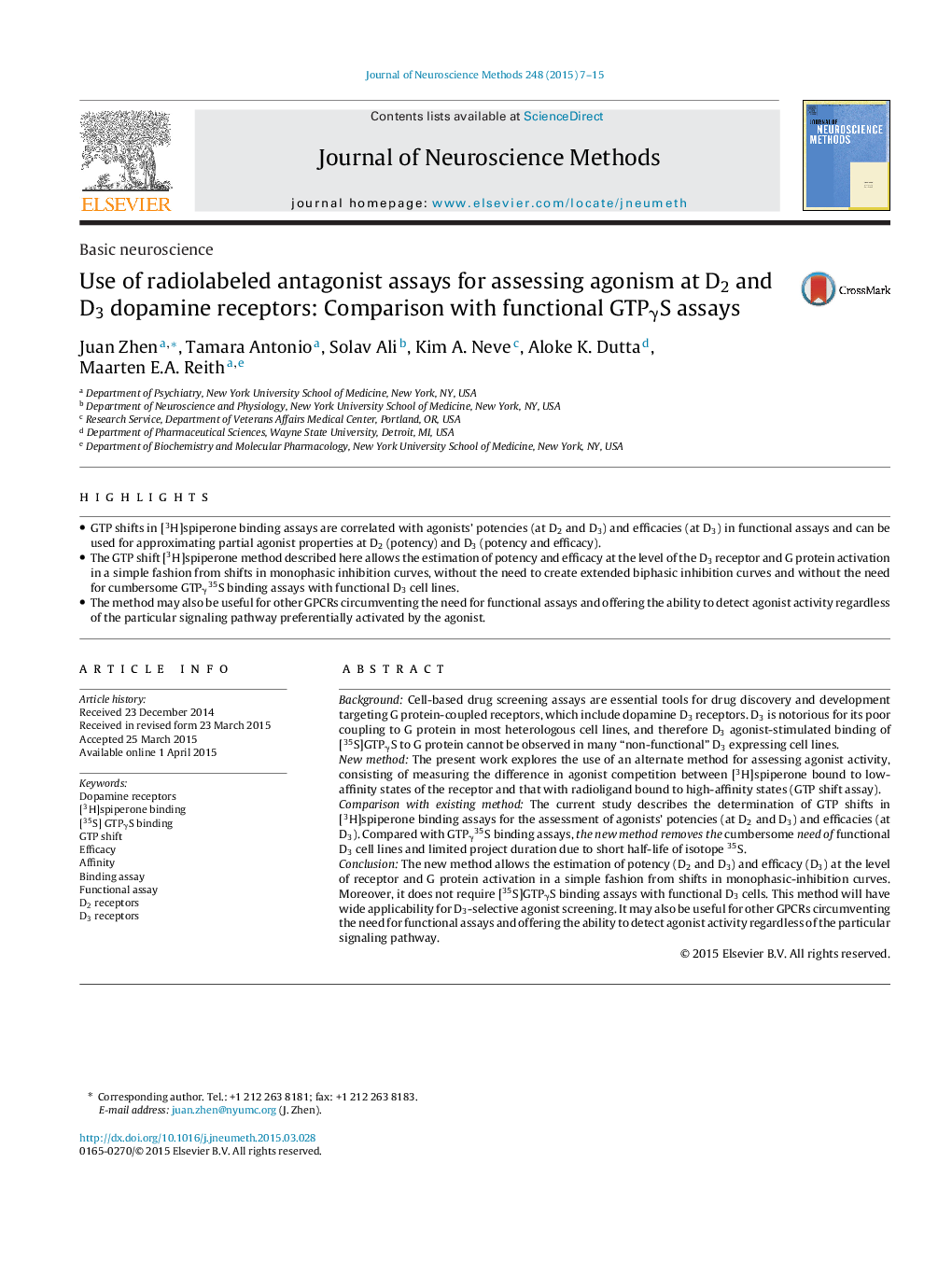| کد مقاله | کد نشریه | سال انتشار | مقاله انگلیسی | نسخه تمام متن |
|---|---|---|---|---|
| 6268238 | 1614621 | 2015 | 9 صفحه PDF | دانلود رایگان |

- GTP shifts in [3H]spiperone binding assays are correlated with agonists' potencies (at D2 and D3) and efficacies (at D3) in functional assays and can be used for approximating partial agonist properties at D2 (potency) and D3 (potency and efficacy).
- The GTP shift [3H]spiperone method described here allows the estimation of potency and efficacy at the level of the D3 receptor and G protein activation in a simple fashion from shifts in monophasic inhibition curves, without the need to create extended biphasic inhibition curves and without the need for cumbersome GTPγ35S binding assays with functional D3 cell lines.
- The method may also be useful for other GPCRs circumventing the need for functional assays and offering the ability to detect agonist activity regardless of the particular signaling pathway preferentially activated by the agonist.
BackgroundCell-based drug screening assays are essential tools for drug discovery and development targeting G protein-coupled receptors, which include dopamine D3 receptors. D3 is notorious for its poor coupling to G protein in most heterologous cell lines, and therefore D3 agonist-stimulated binding of [35S]GTPγS to G protein cannot be observed in many “non-functional” D3 expressing cell lines.New methodThe present work explores the use of an alternate method for assessing agonist activity, consisting of measuring the difference in agonist competition between [3H]spiperone bound to low-affinity states of the receptor and that with radioligand bound to high-affinity states (GTP shift assay).Comparison with existing methodThe current study describes the determination of GTP shifts in [3H]spiperone binding assays for the assessment of agonists' potencies (at D2 and D3) and efficacies (at D3). Compared with GTPγ35S binding assays, the new method removes the cumbersome need of functional D3 cell lines and limited project duration due to short half-life of isotope 35S.ConclusionThe new method allows the estimation of potency (D2 and D3) and efficacy (D3) at the level of receptor and G protein activation in a simple fashion from shifts in monophasic-inhibition curves. Moreover, it does not require [35S]GTPγS binding assays with functional D3 cells. This method will have wide applicability for D3-selective agonist screening. It may also be useful for other GPCRs circumventing the need for functional assays and offering the ability to detect agonist activity regardless of the particular signaling pathway.
Journal: Journal of Neuroscience Methods - Volume 248, 15 June 2015, Pages 7-15